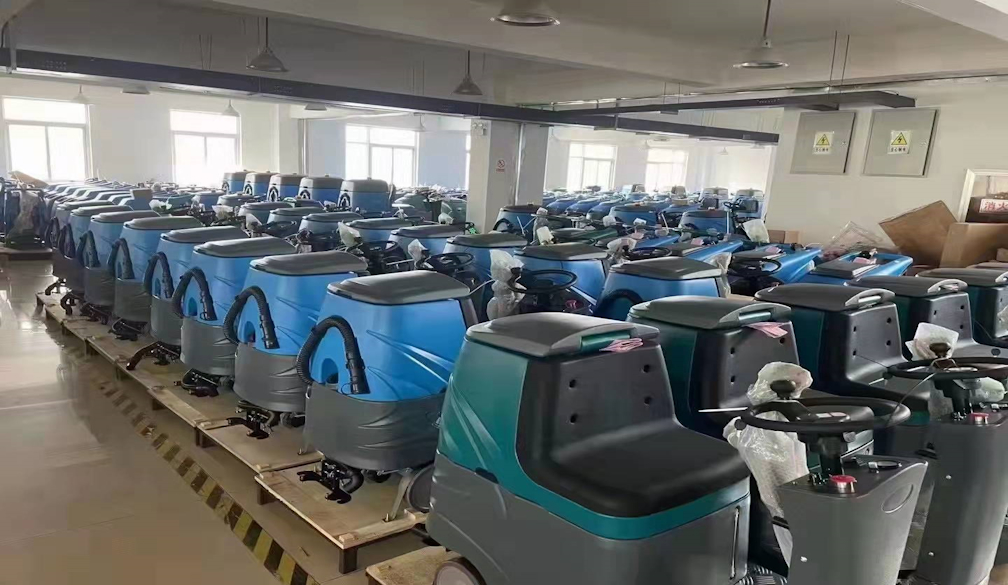The Science of Sweeping: How Ride-On Sweepers Remove Particulate Matter

In our advanced metropolitan scenes, neatness and air quality are fundamental worries. The presence of particulate matter, including residue, soil, and trash, can fundamentally affect both the style of a city and the soundness of its inhabitants. To battle this issue, regions and organizations utilize different techniques for road cleaning, with ride-on sweepers arising as a viable and productive arrangement. This article digs into the science behind ride-on sweepers, investigating how they work to eliminate particulate matter and work on the nature of our metropolitan surroundings.
The Growing Concern of Particulate Matter
Particulate matter, often referred to as PM, consists of tiny solid particles and liquid droplets suspended in the air. These particles can vary in size, from a few nanometres to several micrometres. PM is categorized into different classes, with PM2.5 and PM10 being the most commonly monitored. PM2.5 includes particles with a diameter of 2.5 micrometres or smaller, while PM10 encompasses particles up to 10 micrometres in size.
The health risks associated with exposure to particulate matter are well-documented. PM can enter the respiratory system, causing a range of health problems, including aggravated asthma, reduced lung function, and increased susceptibility to respiratory infections. Long-term exposure has been linked to more severe health issues, such as heart disease, lung cancer, and premature death.
Additionally, particulate matter is a major contributor to poor air quality and reduced visibility in urban areas. It can also settle on surfaces, leading to a dirty and unkempt appearance. To combat these problems, cities and businesses must implement effective street cleaning methods.
Ride-On Sweepers: The Solution to Urban Cleanup
Ride-on sweepers, also known as street sweepers or road sweepers, have become a common sight in urban environments. These specialized vehicles are designed to remove dirt, debris, and particulate matter from streets, parking lots, and other paved surfaces. Unlike manual sweeping, which is time-consuming and less effective, ride-on sweepers offer a systematic and efficient approach to urban cleanup.
The Science Behind Ride-On Sweepers
Mechanical Broom Action
Ride-on sweepers employ a variety of mechanisms to remove particulate matter from surfaces. One of the primary methods involves mechanical brooms, typically made of bristles or brushes, that rotate rapidly as the sweeper moves forward. These brooms agitate and dislodge particles from the surface, making them easier to collect.
Vacuum System
In conjunction with mechanical brooms, ride-on sweepers are equipped with powerful vacuum systems. These systems generate a strong airflow that sucks in the loosened particles, depositing them into a collection bin or hopper. The vacuum ensures that even fine particles, such as PM2.5, are efficiently removed from the surface.
Water Spray
To enhance the cleaning process, many ride-on sweepers are equipped with water spray systems. These systems moisten the surface before the mechanical brooms and vacuum come into action. The water helps to control dust emissions and also aids in loosening stubborn dirt and debris.
Filtration
The collected debris and particulate matter are subjected to filtration within the sweeper. This is a crucial step in ensuring that the captured particles do not re-enter the environment. High-efficiency particulate air (HEPA) filters are often used to trap even the smallest particles, including PM2.5, before clean air is released back into the atmosphere.
Sweeper Types
There are different types of ride-on sweepers, each designed for specific applications. Mechanical broom sweepers are excellent for heavy debris removal, while regenerative air sweepers are highly effective at capturing fine particles like PM. Additionally, some sweepers are designed for indoor applications, such as warehouse and parking garage cleaning, further showcasing the versatility of these machines.
Efficiency and Environmental Benefits
Ride-on sweepers offer several advantages that contribute to their effectiveness in removing particulate matter and improving urban environments:
Speed and Efficiency
Ride-on sweepers cover larger areas quickly compared to manual sweeping, making them a more efficient option for urban cleanup. This speed is crucial in densely populated areas with high foot and vehicle traffic.
Reduced Air Pollution
The vacuum and filtration systems in ride-on sweepers minimize dust emissions during the cleaning process. This not only enhances air quality but also reduces the risk of respiratory problems among residents and workers.
Water Conservation
The use of water spray systems in ride-on sweepers is not only effective in dust control but also promotes water conservation. The water is used sparingly and efficiently, minimizing wastage.
Versatility
Ride-on sweepers come in various sizes and configurations to suit different environments. They can be used on streets, sidewalks, parking lots, and other paved surfaces, making them versatile tools for urban cleanup.
Cost-Effective
While the initial investment in ride-on sweepers can be significant, their long-term cost-effectiveness is evident. They require less labor and offer consistent, high-quality cleaning results.
Case Studies: The Impact of Ride-On Sweepers
Los Angeles, California
The city of Los Angeles faces persistent air quality challenges due to its size and urban density. To combat this issue, the city has invested in a large fleet of ride-on sweepers equipped with advanced filtration systems. These sweepers have contributed to a noticeable reduction in airborne particulate matter, leading to improved air quality and public health.
Singapore
Singapore, known for its cleanliness and environmental initiatives, relies heavily on ride-on sweepers to maintain its pristine streets and public spaces. The use of regenerative air sweepers in particular has helped Singapore achieve and sustain high air quality standards, despite being a bustling urban hub.
Beijing, China
Beijing, notorious for its air pollution, has implemented stringent measures to improve air quality. Ride-on sweepers play a significant role in reducing PM levels on the city's streets. By combining mechanical broom action with water spray systems and advanced filtration, these sweepers contribute to cleaner air and a better quality of life for residents.
Conclusion
The science behind ride-on sweepers is a testament to human ingenuity in addressing the growing concern of particulate matter in urban environments. These machines combine mechanical, vacuum, and filtration systems to efficiently remove dust, dirt, and debris from streets and paved surfaces. Their effectiveness in capturing particulate matter, including PM2.5, makes them invaluable tools for improving air quality and the overall cleanliness of cities.
As cities continue to grow and face air quality challenges, ride-on sweepers will likely play an even more significant role in urban cleanup efforts. Their efficiency, versatility, and environmental benefits make them a vital component of sustainable urban development. By investing in ride-on sweepers and embracing their science, cities can take significant steps toward cleaner air and healthier, more attractive urban environments for their residents.

